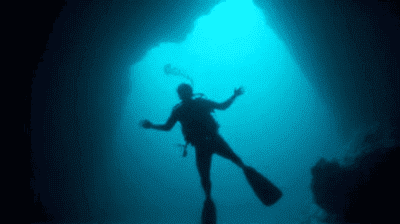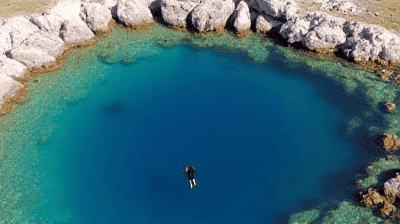The Most Dangerous Cave Dives in the World - And Why Divers Risk It All

Cave diving is one of the most extreme and dangerous sports in the world. It combines the thrill of underwater exploration with the challenges of navigating dark and often unpredictable underwater caves. For those who dare to venture into these submerged passageways, the risks are high, but so are the potential rewards. Cave divers can discover stunning geological formations, rare ecosystems, and historical artifacts hidden beneath the earth’s surface. But lurking in these depths are myriad dangers, and only the best and most daring divers can navigate them successfully.
Understanding Cave Diving
What is Cave Diving?
Cave diving is a specialized form of scuba diving that involves the exploration of underwater caves. Unlike traditional diving, which commonly takes place in open water, cave diving requires divers to navigate confined spaces that can be complex and challenging. This type of diving demands extensive training, experience, and specialized equipment.
Features of Cave Diving
Silt and Visibility: Many underwater caves feature silty bottoms that can stir up debris when disturbed, greatly reducing visibility. Divers must be cautious to minimize their movement and avoid losing sight of their exit route.
Tight Spaces: Caves can contain narrow passages and tight squeezes that challenge divers’ agility and comfort. The mental aspect of maneuvering through confined spaces can be daunting.
Fear of Entrapment: One of the primary concerns in cave diving is the risk of becoming trapped. Passageways can collapse, leading to an urgent need to remain calm and find a safe exit.
Gas Management: Cave divers must be highly skilled in managing their gas supply. The presence of various breathing gases, including air and nitrox, necessitates precise calculations to avoid decompression sickness.
Training and Certification
Due to the risks involved, cave diving requires specialized training and certification. Recommended courses often include:
Intro to Cave Diving: Designed for advanced divers, this course introduces basic cave diving techniques and procedures.
Full Cave Diver: This certification expands on introductory skills, providing in-depth training in navigation, gas management, and emergency procedures.
Technical Diving Courses: Divers seeking to explore deeper and more complex caves may pursue technical diving certifications, focusing on advanced skills.
The Dangers of Cave Diving

Environmental Hazards
Cave divers face a range of hazards inherent to underwater environments, including:
Sudden Changes in Conditions: Water flow, temperature fluctuations, and visibility can change rapidly, creating unexpected challenges for divers.
Hazardous Marine Life: Depending on the location, cave divers may encounter various marine life, some of which can be dangerous if provoked.
Human Error: A minor mistake, such as miscalculating gas supply or misjudging a tight passage, can have serious consequences.
Psychological Challenges
The psychological aspect of cave diving is just as crucial as the physical skills involved. Some of the mental challenges include:
Panic: In confined spaces, it is easy to feel claustrophobic or overwhelmed. Maintaining composure under pressure is essential for safety.
Stress Management: Stress can accumulate due to various factors, including equipment malfunction, navigation confusion, or unexpected disturbances. Divers must develop strategies to manage their stress levels effectively.
Decision-Making: Divers must make quick and informed decisions when faced with unexpected obstacles or emergencies. The ability to remain calm and think critically is vital for preserving safety.
The World’s Most Dangerous Cave Divers
Despite the risks, many skilled divers embrace the challenges of cave diving. Here, we explore some of the most notable figures in the world of cave diving, known for their adventurous spirits and commitment to pushing the boundaries of exploration.
1. Jim King
Jim King is a highly experienced cave diver recognized for his exploration of some of the most dangerous underwater caves. He has navigated numerous caves and has achieved multiple first descents in uncharted territories. King emphasizes the importance of safety while remaining committed to exploration.
Notable Achievements
- Deepest Dive: Jim King has reached depths exceeding 300 feet (91 meters) in his cave diving pursuits, pushing the limits of physical and mental endurance.
- Advocacy for Safety: Despite his record-breaking achievements, King advocates for safety, urging fellow divers to approach cave diving with caution and respect for the environment.
2. Rob Palmer
Rob Palmer is another prominent figure in the cave diving community, known for his fearless explorations and passion for documenting underwater caves. His mesmerizing videos showcase the beauty of cave systems while educating viewers on the challenges divers face.
Notable Achievements
- Exploration of the Yucatan Peninsula: Palmer has made significant contributions to documenting and exploring the extensive cave systems in Mexico's Yucatan Peninsula, including the renowned Sistema Sac Actun and Dos Ojos.
- Community Engagement: Beyond his diving accomplishments, Palmer actively engages with the diving community, emphasizing the need for conservation and responsible exploration.
3. Edd Sorenson
Edd Sorenson is widely considered one of the foremost cave divers in the world. With decades of experience and a passion for exploration, he has ventured into some of the most challenging underwater cave systems on the globe.
Notable Achievements
- Search and Recovery Operations: Sorenson has participated in numerous search and recovery missions, showcasing his skill in challenging conditions where others may not venture.
- Instructor and Mentor: As a cave diving instructor, Sorenson dedicates time to training future generations of divers, sharing his knowledge and expertise with those eager to explore underwater caves.
Why Divers Risk It All

The Allure of Exploration
For many cave divers, the desire to explore underwater caves stems from an innate curiosity and passion for adventure. Divers are drawn to the thrill of discovering hidden worlds, including unique ecosystems and geological features found nowhere else.
Unique Ecosystems: Many underwater caves house rare and delicate ecosystems that provide insight into the Earth’s geological history. Getting a glimpse of these ecosystems deeply motivates divers.
Natural Beauty: The stunning formations, such as stalactites and stalagmites, create a breathtaking display of natural beauty that captivates divers.
Personal Achievement: Successfully navigating the challenges of cave diving can create a sense of accomplishment and fulfillment, pushing divers to conquer their fears and test their limits.
Connections with the Community
The cave diving community is tight-knit and supportive, celebrating shared experiences and the spirit of adventure. Building relationships with fellow divers fosters a sense of belonging and camaraderie.
Emotional Bonds: The bond formed between divers during exploration can be profound. Many divers find lifelong friendships with others who share their commitment to the sport.
Shared Experiences: Sharing stories and experiences of cave diving brings community members closer, creating a rich tapestry of narratives that highlight the challenges and triumphs within the sport.
The Pursuit of Knowledge
Cave diving is not just about adventure; it also involves extensive research and discovery. Many divers are motivated by the chance to learn more about underwater geology, hydrology, and cave ecosystems.
Scientific Research: Some cave divers collaborate with scientists and researchers to study and document underwater cave systems. This work contributes to the broader understanding of geology and biodiversity.
Historical Discoveries: Certain cave systems house ancient artifacts, fossils, and other remnants of human history. The prospect of uncovering historical treasures drives divers to explore.
Cave Diving Safety Measures
Given the numerous risks associated with cave diving, ensuring safety is paramount. Divers must adhere to strict safety measures to mitigate potential dangers.
Pre-Dive Preparation
Thorough Planning: Before embarking on a dive, teams should conduct thorough planning, including mapping the course, studying conditions, and establishing clear communication protocols.
Equipment Checks: Divers must ensure their equipment is in optimal condition. Regular maintenance, checks before each dive, and testing backup systems can prevent potential failures.
Buddy System: Diving with a partner or team enhances safety. Practicing effective communication and having a system in place in case of emergencies is essential.
During the Dive
Gas Management: Divers must monitor gas levels throughout the dive, adhering to pre-established limits to avoid running low or depleting their supply.
Navigation Practices: Using reliable navigation techniques and tools helps divers stay on course. Markers, guidelines, or reels can assist in retracing steps if visibility decreases.
Staying Calm Under Pressure: Maintaining composure during unexpected challenges is vital. Divers should practice techniques for staying calm and assessing situations methodically.
Post-Dive Considerations
Debriefing: After the dive, team members should debrief to discuss experiences, challenges faced, and lessons learned.
Health Monitoring: Monitoring one’s health post-dive, especially for symptoms of decompression sickness, is essential for ongoing well-being.
Conclusion

Cave diving represents one of the most extreme forms of exploration, combining unparalleled beauty with significant risks. The most daring cave divers in the world embrace these challenges not just for adventure but for the pursuit of knowledge, the construction of community, and the personal fulfillment that comes with conquering fears.
While the allure of underwater caves is undeniable, it is essential for divers to approach the sport with respect for the environment and the inherent dangers. By prioritizing safety, conducting thorough preparation, and fostering a supportive community, cave divers can continue to push the boundaries of exploration while celebrating the wonders hidden beneath the surface.
As cave diving evolves and new technologies emerge, the possibilities for exploration remain limitless. For those drawn to the thrill of diving into the unknown, the depths of underwater caves hold countless treasures waiting to be discovered.


